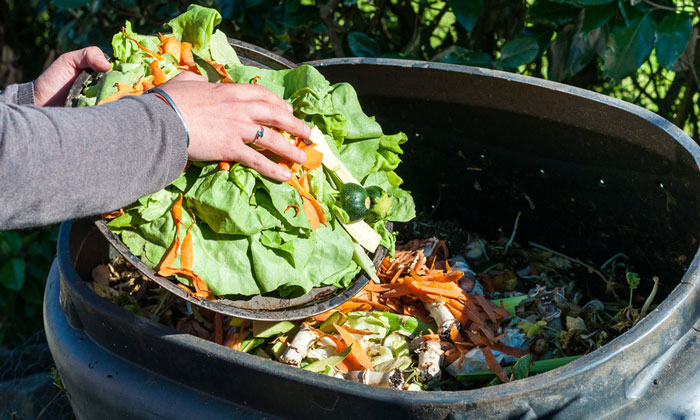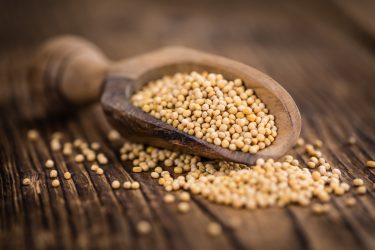Reducing food waste with antimicrobial packaging
- Like
- Digg
- Del
- Tumblr
- VKontakte
- Buffer
- Love This
- Odnoklassniki
- Meneame
- Blogger
- Amazon
- Yahoo Mail
- Gmail
- AOL
- Newsvine
- HackerNews
- Evernote
- MySpace
- Mail.ru
- Viadeo
- Line
- Comments
- Yummly
- SMS
- Viber
- Telegram
- Subscribe
- Skype
- Facebook Messenger
- Kakao
- LiveJournal
- Yammer
- Edgar
- Fintel
- Mix
- Instapaper
- Copy Link
Posted: 2 July 2020 | Nur Alim Bahmid | No comments yet
PhD candidate, Nur Alim Bahmid, outlines his recent study into antimicrobial packaging and whether this could be the answer for fresher food and less waste.


Since 31 December 2019 and as of 01 July 2020, 10,446,353 cases of COVID-19 (in accordance with the applied case definitions and testing strategies in the affected countries) have been reported, including 511,037 deaths worldwide.1
Government restrictions have drastically changed eating habits and the food industry has come under unprecendented pressure, particularly within the first few days of lockdown with consumers flocking to the shops and clearing shelves.
Massive food production in uncertain situations and inappropriate management of food preservation in the consumer-level has lead to an increase of food waste. It is no secret that food waste has been a leading, global environmental issue long before the pandemic.
Food spoilage is one of the key challenges in the reduction of global food waste – defects in appearance and texture often leads to perfectly acceptable produce never even reaching the consumer. “The causes of food waste at the retail level are linked to limited shelf life, the need for food products to meet aesthetic standards in terms of colour, shape and size, and variability in demand,” The Food and Agriculture Organization of the United Nations (FAO) wrote in its 2019 report, The State of Food and Agriculture.
Wasting food means that we have also wasted the energy and water it requires to grow, harvest, transport and package it. When this food inevitably ends up on landfill sites, it decays and produces methane.
“About 11 percent of all the greenhouse gas emissions that come from the food system could be reduced if we stop wasting food. In the US alone, the production of lost or wasted food generates the equivalent of 37 million cars’ worth of greenhouse gas emissions,” World Wide Fund for Nature (WWF) reports.
Antimicrobial packaging
Antimicrobial packaging provides an option to inhibit the spoilage bacteria growing on foods; significantly extending the shelf life of foods – maintaining their quality and improving their sensory properties.
By incorporating active compounds such as bactericocins into the packaging, spoilage can be controlled. These antimicrobial compounds can be released into the food directly via coating method, or released into packaging headspace to protect the food from the growth of microorganisms.
Lockdown has changed shopping behaviours, with consumers moving away from multiple supermarket visits to a planned, weekly shop. Therefore, shelf life and home-storage (eg freezers) have become crucial.
The aforementioned FAO report also found that most food is wasted due to inappropriate storage, poor purchase and meal planning and excess buying. Moreover, there has been a lot of reports of consumers misunderstanding the difference between ‘best before’ and ‘use by’, meaning perfectly good food is often thrown away.
Natural sources
Antimicrobial compounds is a promising way to combat the issue of food waste. In fact, many natural sources are able to release specific antimicrobial compounds which are able to inhibit microbial growth on fresh food products.
Our latest study2 discovered that mustard seeds (Brassicaceae family plant) are a good source of glucosinolate, which is a precursor of the formation of Allyl isothiocyanates (AITC). AITC is a strong antimicrobial compound for a variety of spoilage and pathogenic bacteria.


Incorporation of more mustard seeds fully reduced the bacteria population for a few days.
We have not carried out a test on real food yet, but the study indicates the effectiveness of the ‘natural source’ in inhibition of spoilage bacteria.
Other promising natural sources include clove, cinnamon, lemongrass, basil, sage, rosemary, and oregano3. These all contain high antimicrobial compounds and inhibit a variety of spoilage bacteria, mold, and yeasts in food products.
The mode of action of antimicrobials to bacteria depends on the characteristic of specific compounds released from the natural sources. To apply natural sources as an antimicrobial carrier, the consumer can use them in powder form, for example inside a teabag which is hung inside the packaging. Another way is to incorporate small pieces of the naturals, eg, mustard seeds, in the product.
According to our study, the levels of ingredients added to the packaging must be considered. Excessive levels might affect the food sensory experience, while not enough would not reap the benefits of prolonged shelf life.
Future challenges
Sensory experience is a big challenge in the application of natural sources in home packaged foods, as there is a possibility that an excessive amount of antimicrobial compounds leads to strong odours inside packaging and influences the consumer preferences on their home packaged foods.
However, as our study highlights, the addition of ground mustard seeds in some products had no effects on customer preferences.2 Additionally, the customers can still be given a choice to select their preferred natural sources that can be used for their home-packaged foods. By knowing the odour or smell from the natural source, the consumer will approve the odour of their self-packaged foods.
This kind of packaging not only had the potential to reduce food waste, but it also supports healthy food products. Antimicrobial packaging enables foods to be processed without chemical preservatives which has been traditionally used to prolong shelf life and considered an unhealthy practice.
Although the food preservative is limited in use in the food products, there is a big chance for the customer to consume the products multiple times and therefore, the preservative numerous times. With antimicrobial packaging, the customers can consume food products that are preservative-free.
Moreover, the antimicrobial packaging is able to maintain the freshness, quality, and nutrition of the food products, eg, Vitamin C, protein and minerals content, which benefit consumer health.
According to the World Antimicrobial Packaging market analysis report, market trends and growth of antimicrobial packaging business are expected to value at $11.92 billion by 2024 – suggesting that businesses looking into antimicrobial compounds will have a promising future.
References
- https://www.ecdc.europa.eu/en/geographical-distribution-2019-ncov-cases
- Bahmid, N. A.; Heising, J.; Fogliano, V.; Dekker, M., Packaging Design Using Mustard Seeds as a Natural Antimicrobial: A Study on Inhibition of Pseudomonas fragi in Liquid Medium. Foods 2020, 9 (6).
- Rao, J.; Chen, B.; McClements, D. J., Improving the Efficacy of Essential Oils as Antimicrobials in Foods: Mechanisms of Action. Annual Review of Food Science and Technology 2019, 10 (1), 365-387.
About the author
Nur Alim Bahmid is PhD Candidate at Food Quality and Design Group, Wageningen University and Research.
Related topics
Contaminants, COVID-19, Food Safety, Food Waste, Ingredients, Natural, Packaging & Labelling, retail, Shelf life, Supermarket, Sustainability, The consumer








